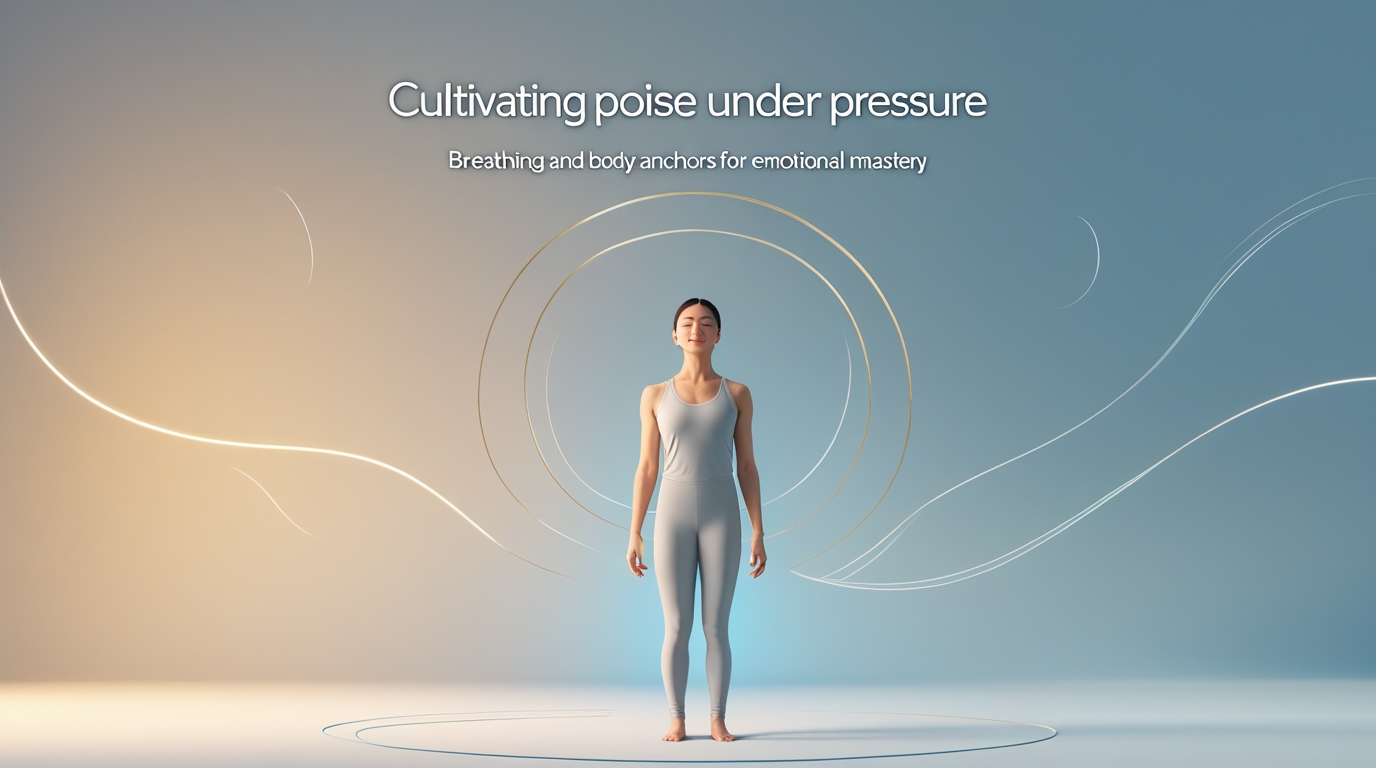Round Rock Journal – In a world that moves at the speed of chaos, cultivating poise means finding stillness amidst the storm. Poise is not about suppressing emotions, but rather mastering them through awareness and balance. It’s the ability to act with clarity when everyone else is reacting out of panic. From executives in high-stakes meetings to athletes in championship moments, poise becomes a defining factor between success and collapse. Personally, I believe poise is a form of quiet power one that radiates confidence without aggression and strength without noise.
“Read also: How Switching to Organic Changed My Health and My Home“
Understanding Pressure and Its Physiological Impact
Before we learn to stay calm, we must understand what pressure does to the body. When stress rises, the brain’s amygdala triggers a fight-or-flight response, flooding us with adrenaline and cortisol. Breathing becomes shallow, muscles tighten, and our perception narrows. This ancient mechanism was once useful for survival, but in modern life, it often works against us. In high-stakes environments, this biological reaction can sabotage decision-making and emotional stability. Recognizing these sensations is the first step toward regaining control.
The Power of Breathing as a Mental Reset
Among all the tools for cultivating poise, breathing is the most immediate and accessible. Deep, rhythmic breathing activates the parasympathetic nervous system, signaling the body to relax. Techniques like box breathing inhaling for four counts, holding for four, exhaling for four, and pausing for four can reset the mind within seconds. Personally, I’ve found that one mindful breath before responding to tension changes everything. It interrupts emotional reactivity, grounds attention, and creates space for intentional action instead of impulsive reaction.
Body Anchors: Using Physical Awareness to Stay Grounded
Beyond breath, the body itself can become an anchor of calm. Body anchors are deliberate points of physical focus like feeling your feet on the floor, relaxing your shoulders, or sensing the weight of your hands. When the mind races, shifting awareness to the body helps redirect energy from anxiety to stability. I often liken it to a ship dropping anchor during a storm: the waves still crash, but you no longer drift. This subtle awareness cultivates presence, allowing composure even in emotionally charged situations.
Bridging Mind and Body Through Awareness
What makes breathing and body anchors so powerful is their synergy. Breathing slows down the physiological storm, while body awareness restores a sense of presence. Together, they bridge the gap between mind and body, creating alignment under pressure. Neuroscientific studies show that mindful body awareness enhances emotional regulation by increasing prefrontal cortex activity essentially rewiring how we handle stress. From a personal standpoint, this practice transforms stress from something to avoid into something to observe, navigate, and master.
Practicing Poise in Everyday Scenarios
Cultivating poise isn’t reserved for crisis moments; it’s a daily discipline. You can practice it during traffic jams, heated conversations, or public speaking. For example, before entering a stressful meeting, take a slow breath, feel your posture, and connect to your anchor whether it’s your breath, hands, or feet. Over time, this becomes second nature. The goal isn’t perfection, but progress: becoming just 10% more centered than yesterday can shift how you respond to life’s challenges dramatically.
Why Poise Matters in Leadership and Performance
In leadership, poise under pressure is the difference between inspiring confidence and spreading chaos. Teams mirror the emotional state of their leader. When a leader reacts impulsively, anxiety ripples through the organization. But when they breathe, pause, and respond with intention, calm becomes contagious. Similarly, in performance-based fields like sports or the arts, poise enhances flow states where focus, timing, and intuition align perfectly. From my observation, true excellence is born not from intensity, but from controlled presence.
“Read also: Semantic Segmentation in Visual Editing Tools, Redefining Precision in Digital Creativity“
Turning Stress into Strength
Interestingly, the same energy that fuels anxiety can also fuel focus and determination if we channel it correctly. Through consistent breathing and grounding, we learn to reinterpret pressure as potential. Instead of “I’m nervous,” the mindset shifts to “I’m ready.” This reframing, supported by physical anchors, transforms fear into readiness. The body becomes a stabilizer, not a source of panic. It’s proof that calm is not the absence of pressure, but the mastery of it.
Personal Reflection: The Art of Being Still in Motion
From my own journey, cultivating poise feels like learning to breathe underwater it’s not about escaping the storm, but learning to move within it. Breathing and grounding aren’t abstract ideas; they are survival tools for modern living. In moments when the world demands urgency, poise whispers patience. When chaos erupts, it reminds us to return to the body, to breathe, to anchor. That is where clarity lives. And in that stillness, we rediscover our ability to act with wisdom rather than fear.
The Future of Emotional Mastery: Training Poise as a Skill
In the future, emotional regulation will be recognized not just as a psychological trait but as a trainable performance skill. Workplaces, schools, and even athletic programs are beginning to integrate mindfulness, breathwork, and somatic awareness as part of professional training. As we collectively face more uncertainty and speed, cultivating poise will be essential for resilience and creativity alike. After all, composure isn’t something we are born with it’s something we build, one breath, one moment, one mindful pause at a time.


